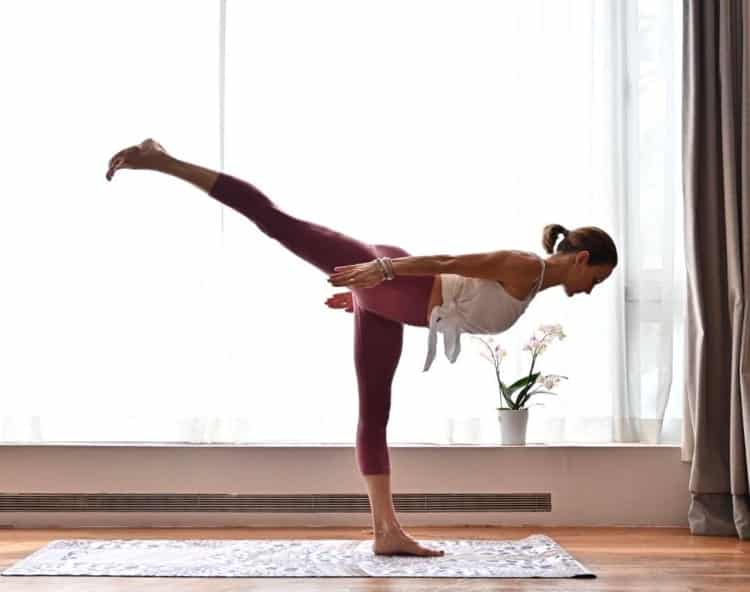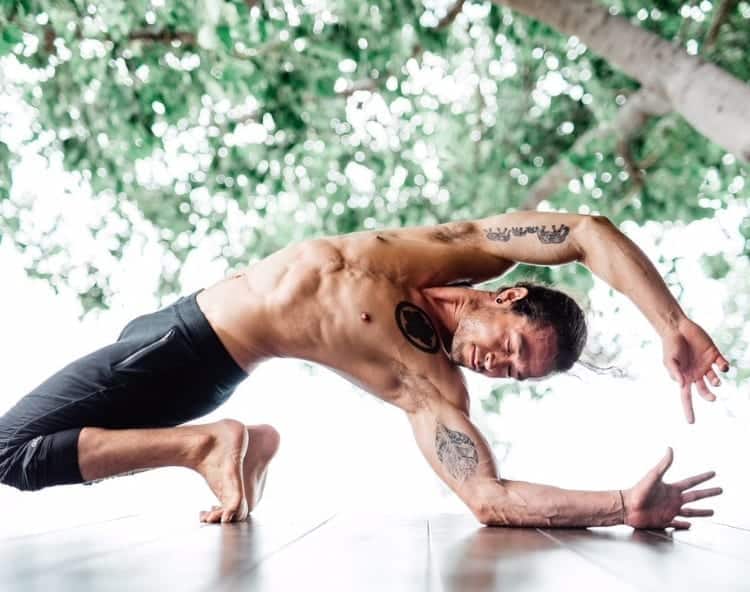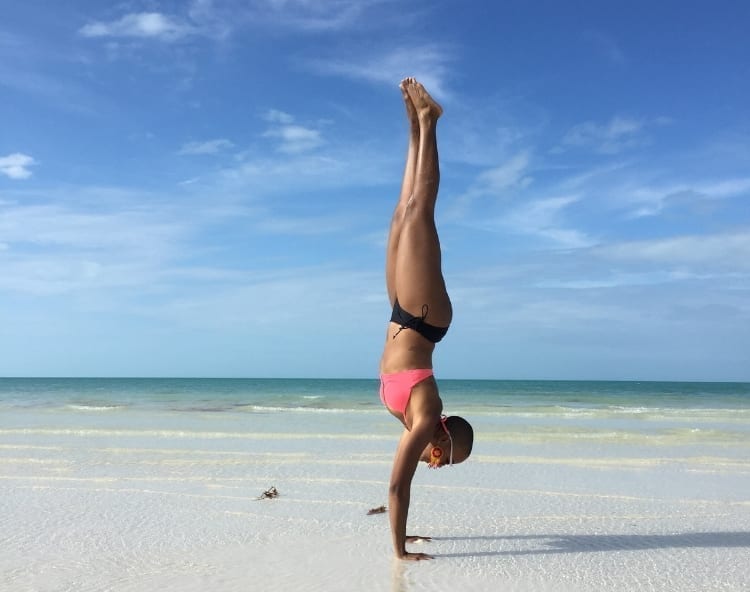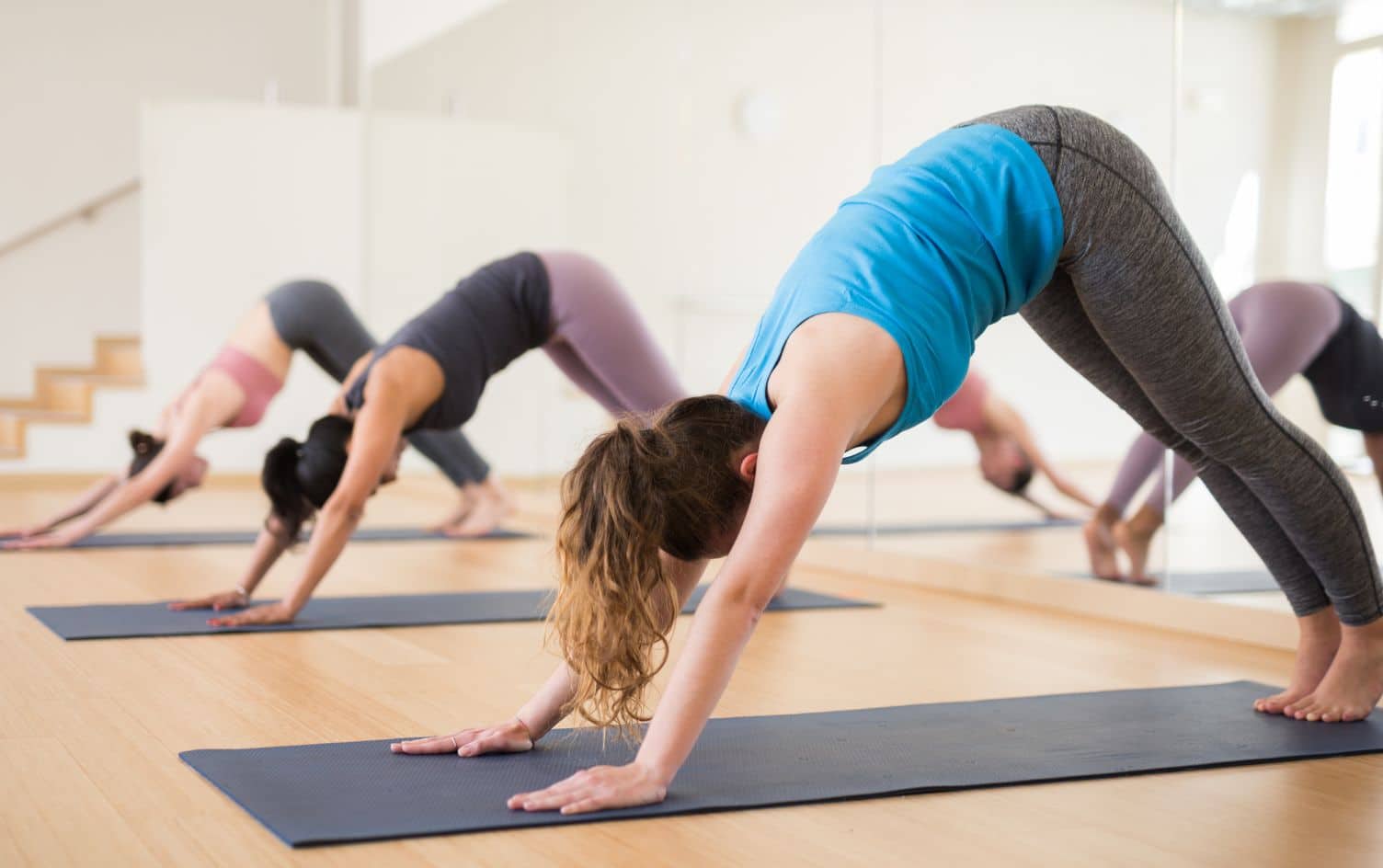It’s easy to assume a yoga instructor’s party trick is to magically, easily contort into a pretzel on command. They’re just born to twist into themselves, balance on their hands and do splits Gumby would envy, right?
Not necessarily: Yoga teachers are people, too. Just like us, many of them find certain poses to be extra challenging. Here, seven yoga instructors share which pose they struggle with the most — as well as what they do to get through it. You might be surprised that some poses you consider easy challenge these pros. It’s because we all have different bodies and abilities, so embrace yours and don’t shy away from those challenges. Sometimes the poses we struggle with the most become our best ones.
“Every day we show up to our mats we are different, so our practice is different. Some days balance and twisting is easy, some days it’s not. Just let yourself be where you are in yourself and in the practice any given day,” says Danielle Karuna an advance certified yoga teacher and yoga therapist. “If we open to the idea that nothing is set in stone, we may surprise ourselves in our practice and in who we are in life.”


This balance is especially difficult on the right leg for Sarah Platt Finger, co-founder of ISHTA Yoga. “My right knee was injured twice while I was a competitive gymnast growing up. Because of that, I have hyperextension in that knee that makes it hard for me to use the muscles around the joint support myself in this pose,” she explains.
Before coming into warrior III, Platt Finger does tiger pose on hands and knees (one arm extended forward and opposite leg extended back) to help strengthen her core, glutes and hamstrings. She also does a couple of sun salutations to open her hamstrings and shoulders and strengthen her legs and abdominal muscles. Then when it comes time for the asana, she’ll often bend her right knee or use blocks for support.


Backbends like wheel and camel aren’t only about your back. “The front of my hips are extremely tight, and most people don’t realize that deeper backbends require fluidity in the hips,” explains YogaGlo instructor Dice Iida-Klein, who also finds lotus (padmasana) challenging for the same reason.
He’s constantly working on the rotation of his hip joints and practicing mobility work to build his range of motion, which has helped him improve these poses, he says. “I like to explore dynamic versions of familiar poses. Especially helpful are hip and shoulder rotations that include flexion, external rotation and abduction,” he adds.


“Years ago I mastered pressing up into handstand and other more technical variations of this inversion. But my wrists grew unhappy and although my ego was bruised, I had to take a break,” says YogaGlo instructor and mindfulness coach Sara Clark. Today, handstands take more effort and patience for her. “I still battle with what once was: deep backbends, press-ups and playing with different leg variations all while balancing on my hands upside down,” she explains.
Before practicing, she slows down her breath and visualizes herself in a handstand. “This helps align both my mind and body with what I am working toward,” she says. “It’s simple yet incredibly effective.”
She also practices compassion and non-attachment, celebrating where her body is moment by moment. “The capabilities of my body are still amazing and should still be celebrated,” she says. “Do not cling to what your physical body can do, as everything is in constant flux. Be compassionate toward yourself as you practice. And always thank your body.”


“When I first started yoga, I was so frustrated because my hips we so tight. I could not move into warrior I with any sort of grace at all,” says yoga instructor Tiffany Bush, the community manager at Gaia. Five years later, she still struggles some days, but she has a new understanding of the pose. “We are not meant to look exactly like Patanjali or our neighbor beside us in class,” she says.
In addition to entering the asana with more appreciation for her body, she also warms up the muscles around her hips, does core work and child’s pose, (which helps practice stretching the arms overhead and sinking and breathing into the hips), and moves slowly, starting with a strong foundation and then moving her arms overhead to ensure proper alignment.


There’s a lot going on in this asana. “I have such a difficult time keeping my back leg lifted, not torquing my standing foot and knee in and finding rotation around my center, all while staying balanced,” explains Karuna.
When Karuna plans to do revolved half-moon pose in a sequence, she warms up first with poses that stretch her hamstrings, incorporate twisting and work her balance. “When in the pose, I really focus on not allowing the knee and foot of my standing leg to turn in or out, and if I really flex the lifted leg and engage the quad muscle, that helps with the structure of the whole pose,” she says. “I also find that in a balance that is also a twist, it is easy to forget about the breath. That’s the one thing that can carry you through the pose and the practice, so I keep turning the focus to my breath in every pose.”


“There was a time when eagle pose was a huge challenge for me,” says Tara Powers, a licensed yoga teacher trainer. “I was so self-conscious and doing anything that didn’t make me feel like I looked ‘good’ was difficult. I didn’t like the way my legs looked, which translated to how they felt. I would wobble and struggle.”
Powers shifted her mindset, and goes into every yoga class prepared to enjoy the experience and embrace the mind-body conversation. She seeks the moment-to-moment sensation rather than the accomplishment of any shape. “Instead of struggling for anything, I am radically accepting everything my body says without judgment,” she says. “Now I feel incredibly powerful and focused in the same pose, and I love to create arm variations and transitional steps. It’s really an adventure now.”

“I’ve always been stronger than flexible. For many years I dreaded forward bending because it was physically painful, brought up strong emotions and basically pointed out the blindspot around my lower back, pelvis and hips. Then the inner voices would comment on how bad I was at asana,” says Michael Hewett, founder of Vessel Academy.
He’s learned to take a kinder, incremental approach to the pose by placing a blanket underneath his knees, bending his knees, keeping his spine extended and articulating the contraction of the quads. “As I gradually extended my knees into the blanket underneath, emotionally I felt safe. This allowed me to see the stories my mind was projecting about it being awful,” he says.




